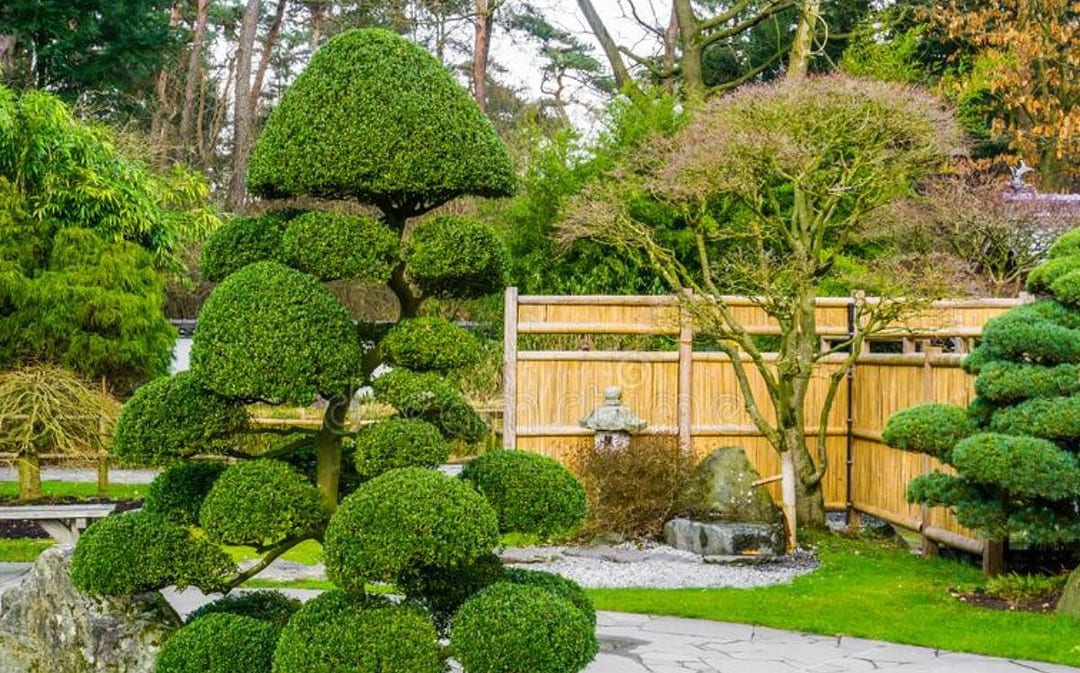Table of Contents
Japanese Style Tree Pruning – How to Guide
The art of pruning trees originated in Japan many centuries ago. It was developed as a way to shape trees into desired shapes for aesthetic purposes. Today, the practice of Japanese style tree pruning is still popular among landscapers and homeowners who want to achieve a certain look for their outdoor space. If you’re thinking about pruning your own trees in the Japanese style, read on for a step-by-step guide.
Step 1: Select the Right Tree Species
Choosing the right tree species is important for the health of your property. The wrong tree species can lead to overgrowth, disease, and even death. Here are four tips to help you select the right tree species for your property.
1. Consider Your Space
The first step in choosing the right tree species is to consider your space. You will need to take into account the size of your property and the amount of space you have available for a tree. Once you have a general idea of the size of tree you are looking for, you can begin to narrow down your options.
2. Consider Your Climate
The next step is to consider your climate. Different trees thrive in different climates. Some trees are more resistant to cold weather while others are more resistant to heat. You will need to take into account the average temperature in your area and choose a tree that will be able to withstand those conditions.
3. Consider Your Soil
Another important factor to consider is your soil type. Different trees have different requirements for soil type and drainage. You will need to make sure that you choose a tree that will be able to grow in the type of soil you have on your property.
4. Consider Your Maintenance Needs
Finally, you will need to consider your maintenance needs. Some trees require more maintenance than others. You will need to decide if you are willing and able to provide the necessary care for a particular tree species. Once you have considered all of these factors, you should be able to narrow down your choices and select the right tree species for your property.
Step 2: Prune During the Dormant Season
Winter is the ideal time to prune many types of trees, including fruit trees. Deciduous trees are usually pruned while they are dormant, and conifers can be pruned at almost any time of year. The exceptions are evergreen trees and shrubs that bleed sap easily when cut, such as maples (Acer spp.), dogwoods (Cornus spp.), and rhododendrons (Rhododendron spp.). These should be pruned in late spring or early summer, just after they have finished flowering.
Pruning during the dormant season has several advantages. First, it is easier to see the structure of the tree without its leaves. Second, there is less chance of wounding the tree with pruning cuts because the leaves are not present to harbor bacteria and fungi. Finally, pruning during the dormant season minimizes stress on the tree because it is not actively growing.
There are a few things to keep in mind when pruning during the dormant season. First, make sure that your pruning tools are sharp and clean. Second, avoid pruning if the weather is cold and sunny because this can damage the tree’s bark. Finally, don’t over-prune! It is better to make several small cuts over the course of a few years than to remove too much at once.

Japanese Style Tree Pruning
One type of dormant season pruning that can be done on almost any type of tree is called “Japanese style” tree pruning. This type of pruning involves removing dead or diseased branches, as well as branches that rub against each other or cross over each other. This type of pruning helps to promote good air circulation and prevents the disease from spreading through the tree.
To Japanese style prune a tree, and start by removing any dead or diseased branches. Next, identify any crossing or rubbing branches and remove one of them. Make sure that you do not remove more than 30% of the live branches from the tree in any given year.
Pruning during the dormant season has several advantages and can help improve the overall health of your trees. When pruning, be sure to use clean, sharp tools and avoid over-pruning. Japanese style tree pruning is a great way to promote good air circulation and prevent the disease from spreading through the tree.
Step 3: Cut Branches Back to Three Points
Cutting branches back to three points is a simple task that can be completed with just a few tools. This task is commonly performed by tradesman, but can also be done by homeowners as well. Whether you’re a homeowner or tradesman, follow these steps to properly cut branches back to three points.
Blog Body:
Tools Needed
To cut branches back to three points, you will need the following tools:
- -Pruning shears
- -Loppers (optional)
- -Handsaw (optional)
- -Chainsaw (optional)
- Step 1: Remove any dead or diseased wood from the branch using pruning shears. It’s important to make clean cuts so that the plant can heal properly. Make sure to sterilize your pruning shears before and after use.
- Step 2: Cut the branch back to a length of three inches using pruning shears, loppers, a handsaw, or a chainsaw.
- Step 3: Make sure that the remaining branch has three healthy buds or leaves. If it does not, cut the branch back even further until there are three healthy buds or leaves remaining.
Step 4: Remove Dead or Damaged Branches First
The first step is to assess the tree. Begin by looking up at the tree from ground level and identify any dead or damaged branches. If possible, use binoculars or a ladder to get a closer look. Once you’ve identified the dead or damaged branches, you’ll need to consider two things: the size of the branch and the location of the branch.
If the branch is small (less than 2 inches in diameter), you can probably handle removing it yourself. However, if the branch is large (greater than 2 inches in diameter), you’ll need to call in a professional. The same goes for if the branch is located in a difficult-to-reach spot. It’s better to be safe than sorry!
The next step is to remove the branches. If you’re removing small branches, you can do so with pruning shears. For larger branches, you’ll need a saw. And for difficult-to-reach branches, you may need both pruning shears and a saw. Start by cutting off any small side branches that are attached to the main branch. Then, cut the main branch itself as close to the trunk as possible. Finally, remove any remaining leaves or debris.
By following these steps, you can safely and easily remove any dead or damaged branches from your trees. Remember to always assess the tree first, and if you’re unsure about anything, don’t hesitate to call in a professional tree service company.
Conclusion:
By following these four steps, you can successfully achieve a beautiful Japanese style tree trim that will add visual interest and value to your home landscape. As with any type of landscaping project, be sure to do your research beforehand and consult with a professional if you have any questions or concerns. With a little bit of knowledge and effort, you’ll be able to create a stunning focal point in your yard that will be enjoyed for years to come.

